September 2, 2019
Downtown, Payne-Phalen, Railroad Island, Dayton’s Bluff
20.5 Miles
In all my rides around Saint Paul, I’d never seen a dinosaur, nor had I ever expected to. That’s why the tyrannosaurus gazing out from a building on Pine Street on the edge of Payne-Phalen caused me to lock up the brakes on my bike.

I saw a guy attending to the T-Rex so my reportorial instinct took over and I rang the doorbell at Caztek Engineering. Rob Roberts warmly welcomed me and invited me inside.

Rob explained that he was building a craft for the Red Bull Flugtag on September 7th. The Flugtag (German for “flying day”) is a competition for homemade flying machines, which with a pilot aboard, are launched off a 30 foot ramp into a body of water. In Saint Paul’s Flugtag, that body of water was the Mississippi River.
Rob was always moving, painting, bouncing around the workshop, altering his focus between the T-Rex and my queries. He was quick to smile and quick to laugh as he detailed his plan for the green tyrannosaurus.

The team name they picked was “Metaphorasaurus,” which Rob told me involved a “larger metaphor with throwing a dinosaur off of a platform into the water.”

Rob went on to explain the team philosophy of their flying machine. “Everyone was on board that we didn’t want to make it a functional airplane ‘cause it kind of sucks all the fun out of it. Doing something sculptural was what we were steering for. And then I have a thing for T-Rex.”
Rob took advantage of the unique Caztek Engineering facilities to build the T-Rex. Caztek, he said, is a designer prototype company focusing on mechanical engineering and machining. People hire Caztek if they don’t have an engineering department or if the engineering department is busy.
Rob got the Flugtag bug watching it in 2010, the other time Saint Paul hosted the Red Bull event. He wasn’t going to pass up the chance to crash into the Mississippi River this time.
The more fanciful the craft and offbeat the skit crews perform prior to flight, the better. Creativity, showmanship by each crew, and flight distance are what Flugtag judges look for. That was the impetus behind building a T-Rex flyer. “It was just something that was goofy and instantly recognizable and it would be cool to build. Plus we want to have it puppeteer a little bit. So instead of it just falling into the water, it kind of does stuff as it falls into the water, like the jaw moves and things like that.”

Rob led construction of Metaphorasaurus while he prepared to pilot it off the 30-foot platform and into the river. “I’ve been stretching a lot for the last two weeks, and I’m like, ‘Oh, I’ve gotta be able to fall.’ So I’m just going to do a lot of yoga and that’s about it. That’s my prep.”
I asked Rob if he’s a daredevil by nature. “I’m not at all,” he said. “I’m like the last guy. I’m afraid of heights.”
Rob tapped his wife for help. He explained, “she’s an actual theater professional. A lot of this was built around the fact that she has a lot of able friends.” At least 10 family members and friends helped build the flying T-Rex.
On Flugtag day, all the flying machines are lined up for judges and spectators to review. “That’s actually the part I’m most excited about is looking at other people’s entries up close,” Rob told me. “’Cause each one is in the air for about a second and a half. I’m most interested in people bringing in their craziness.”

Fun is the idea behind the Flugtag, but safety is nearly as important. According to Rob, Metaphorasaurus was built with that in mind. “It’s mostly insulation foam on PVC ‘cause I don’t want to have anything I’m not willing to land on be part of it. So I’m not gonna get harpooned by anything. It’s very collapsible.”

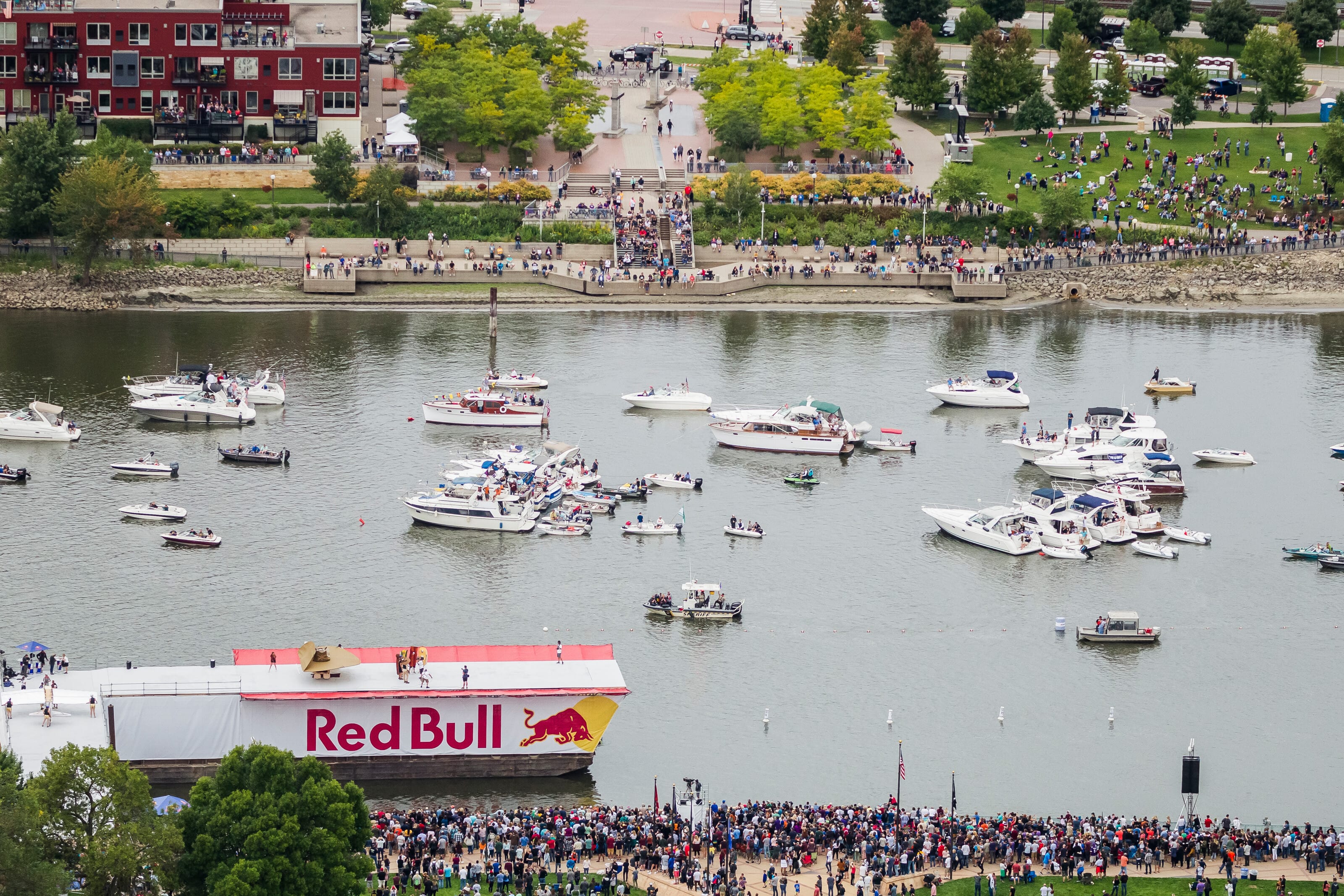
Rob said the judges closely examine each craft to assure they’ve met safety standards. If there’s anything that could lead to injury, the team must correct it prior to the flight. Additionally, Flugtag rules mandate that the pilot wear an official helmet and all team members wear life jackets.


So what was Rob hoping for when Metaphorasaurus takes to the air? “My ideal flight is that it doesn’t fall over until it leaves the platform, and then my ideal flight pattern is a belly flop. Ideally I’ll be on top of it or clearing it as opposed to it landing on me.”

The Metaphorasaurus team placed 36th out of the 38 teams that entered, which was just fine with Rob. “Since I built this thing to crash, I have no problems giving the judges an opportunity to have fun trash-talking us. My BIGGEST win is we got some really solid pics in the newspapers and everyone on our team had a blast!”


From Caztek, I resumed riding east on University until its end at Lafayette Road, which I followed northeast to Railroad Island.


Looking at the parking lot belonging to Sacred Heart Catholic Church, there’s nothing unusual about the block-long space on Sixth Street East between Hope and Sinnen Streets. However, it is the scene of the 1994 cold blooded murder of Saint Paul Police officer Ron Ryan Jr. that stunned the Twin Cities.

Officer Ryan, a rookie, was shot to death just after 7 a.m. on August 26, 1994 while checking on a man reportedly sleeping in a car. (Several hours later, the same person gunned down Officer Tim Jones and his canine partner, Laser, who were helping with the massive manhunt to find Ryan’s killer.) Police captured the suspect on the East Side about 1 p.m. The story was front page news for days. More than twenty-five years later, August 26, 1994 remains among the worst days in Saint Paul Police Department history.
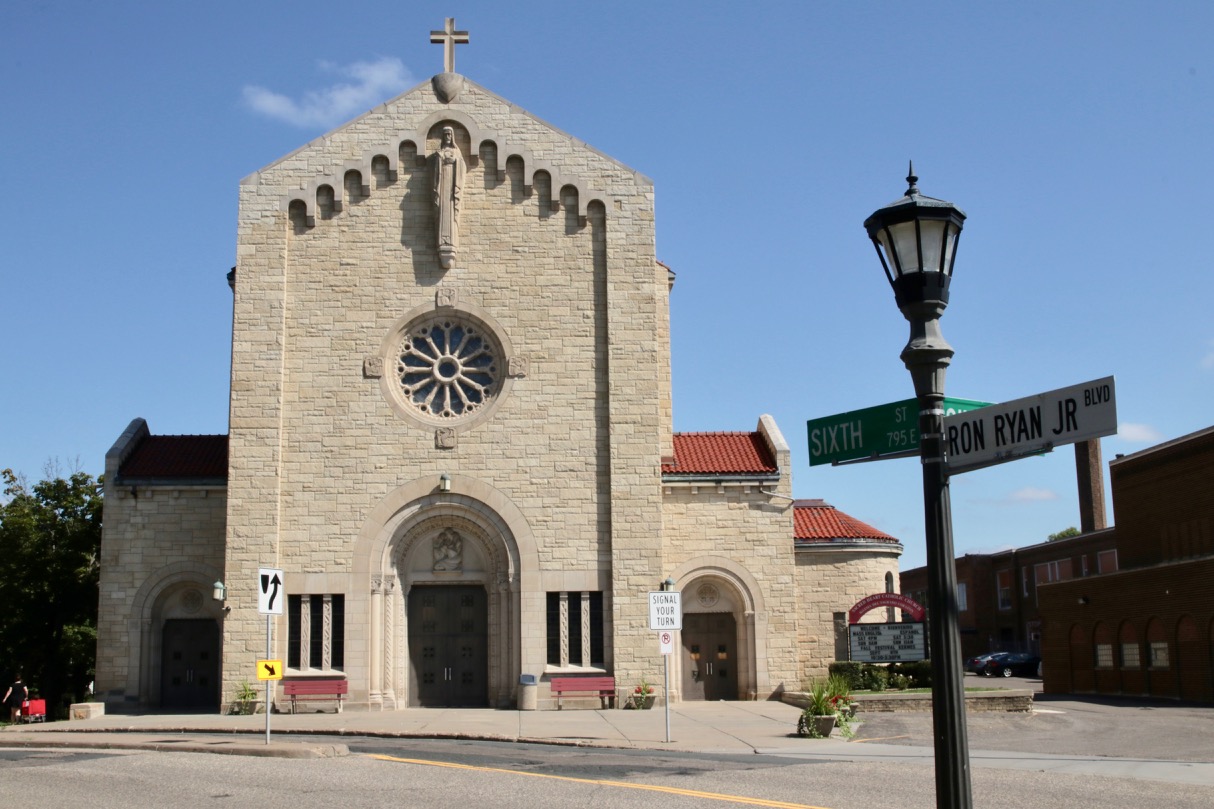

As for Sacred Heart Catholic Church itself, it continues to serve the neighborhood at 840 Sixth Street East with English language services, and since 1998, Spanish language services as well.
Moving on from Sacred Heart Catholic, I zigged and zagged through Dayton’s Bluff in a mostly southern direction until I got to 953 East McLean Avenue, where I stopped to survey the decorated purple martin house about 20 feet in the air which features a custom paint job, an American flag and wind chimes.

There is a park just off McLean that confused me when I rode up to it and still had me confused as I began writing this. Mounds Park, on Cypress Street, is just south of McLean Avenue. My first thought was that it was part of Indian Mounds Regional Park (which is about a block south.) As I scoped things out, however, I reconsidered.

I did a thorough web search and found no record of “Mounds Park” in Saint Paul, other than the area being labeled on Google Maps. Even the list of parks on the City of Saint Paul website doesn’t reference Mounds Park.
Frankly, there isn’t much to this space aside from a weary basketball court on which a game was being played, and a timeworn tennis court.
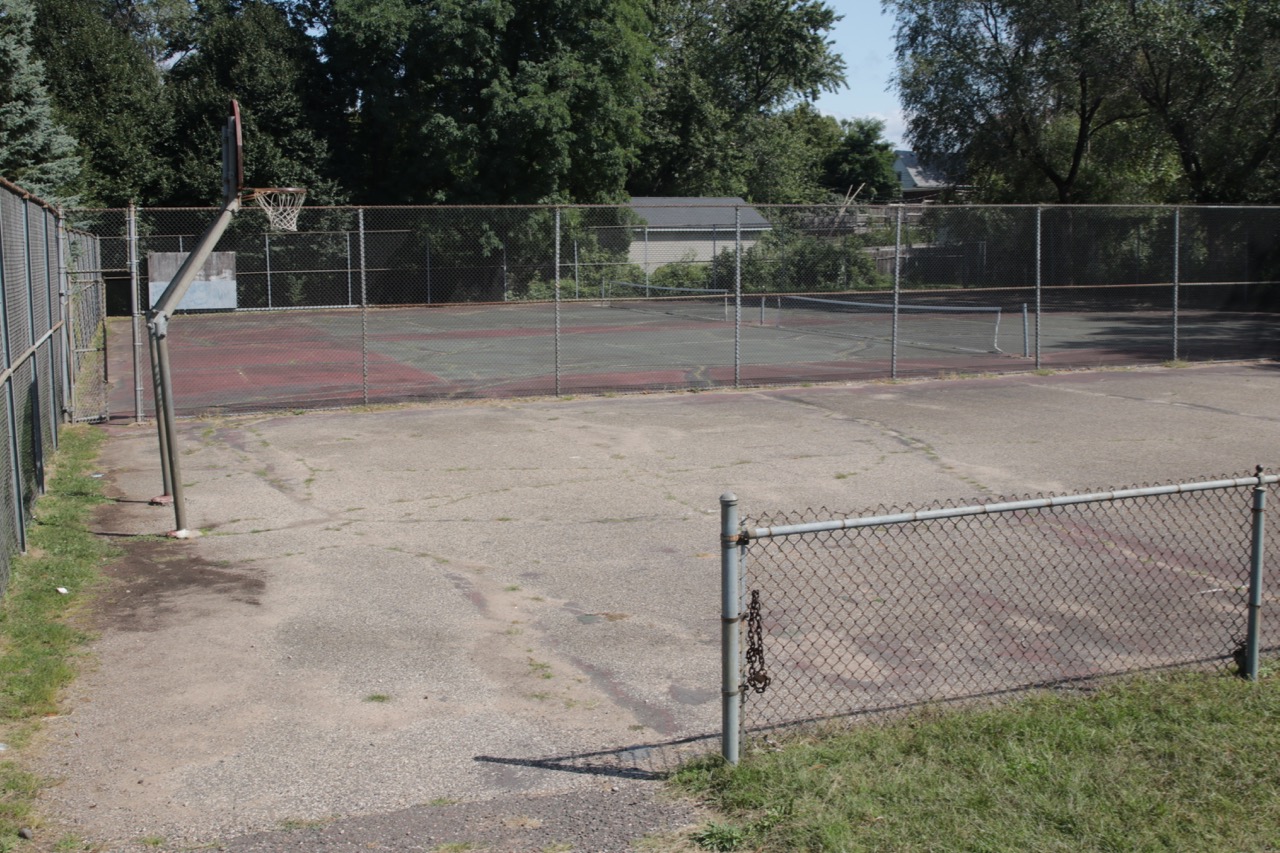
What had been a softball or baseball field is unusable because of a pile of brush and dirt in right field.

A call to the Parks and Recreation Department cleared up the mystery. The very helpful Mike Charlier, a Park Maintenance Supervisor, told me the former Mounds Park is a Recreation Department maintenance facility.

Department trucks are parked in a fenced lot and cleaning supplies and equipment for snow removal and grass cutting are kept inside the building. All of that explains the garbage and recycling bins lined up along a fence.

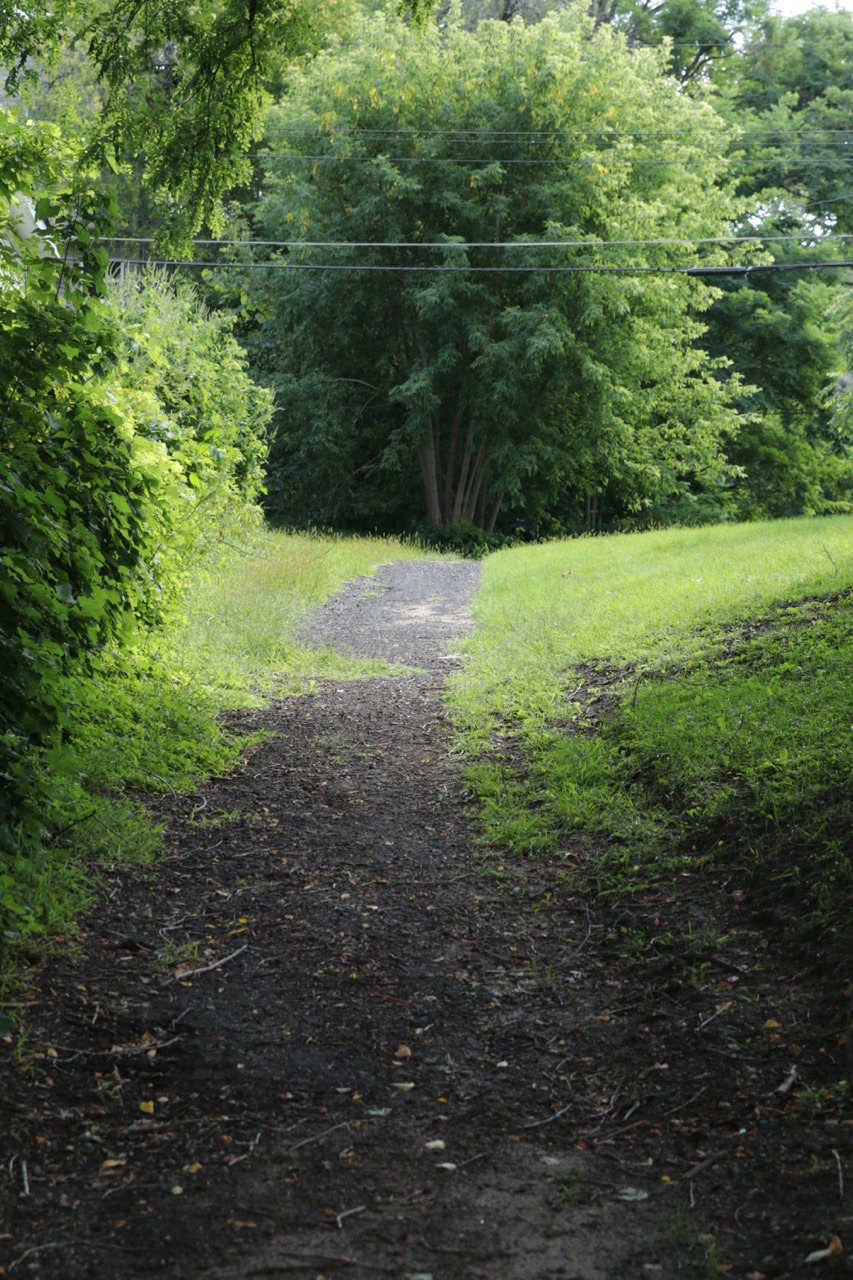
I left the former Mounds Park via a narrow path that disappeared into some woods. A half block later the path spit me out on the 1000-block of Burns Avenue.

American flags decorated the boulevard up and down Burns Avenue. The patriotic display is courtesy of the Scouts BSA (formerly Boy Scouts). It is a fundraiser called Flags Across America that one troop around Dayton’s Bluff does. Typically, scouts will put up American flags on several holidays, including Memorial and Labor Days.


A most unusual property sits at 8 Bates Avenue, at the intersection of Clermont Street. This five bedroom, five bathroom home was built in 1886, according to Ramsey County records, while the garage was constructed more than 100 years later, in 1994. It was immediately obvious that the garage was large, but moving several yards southwest on Clermont made it clear just how big it is.

Not only is it three stories, the garage has two levels of doors large enough for vehicles. The upper level may be a workshop or living space. All told, Ramsey County property records say the garage is just shy of 800 square feet.
Other items of note are the multiple strata of retaining walls which keep the steep hillside from eroding and the solar panel array near the hilltop.

Eight Bates Avenue is obviously well maintained. Gazing at the front, however, leaves little doubt that significant modifications have been made to the original structure. Among those are changes to the siding, roof, windows and front porch that have altered the original architecture.
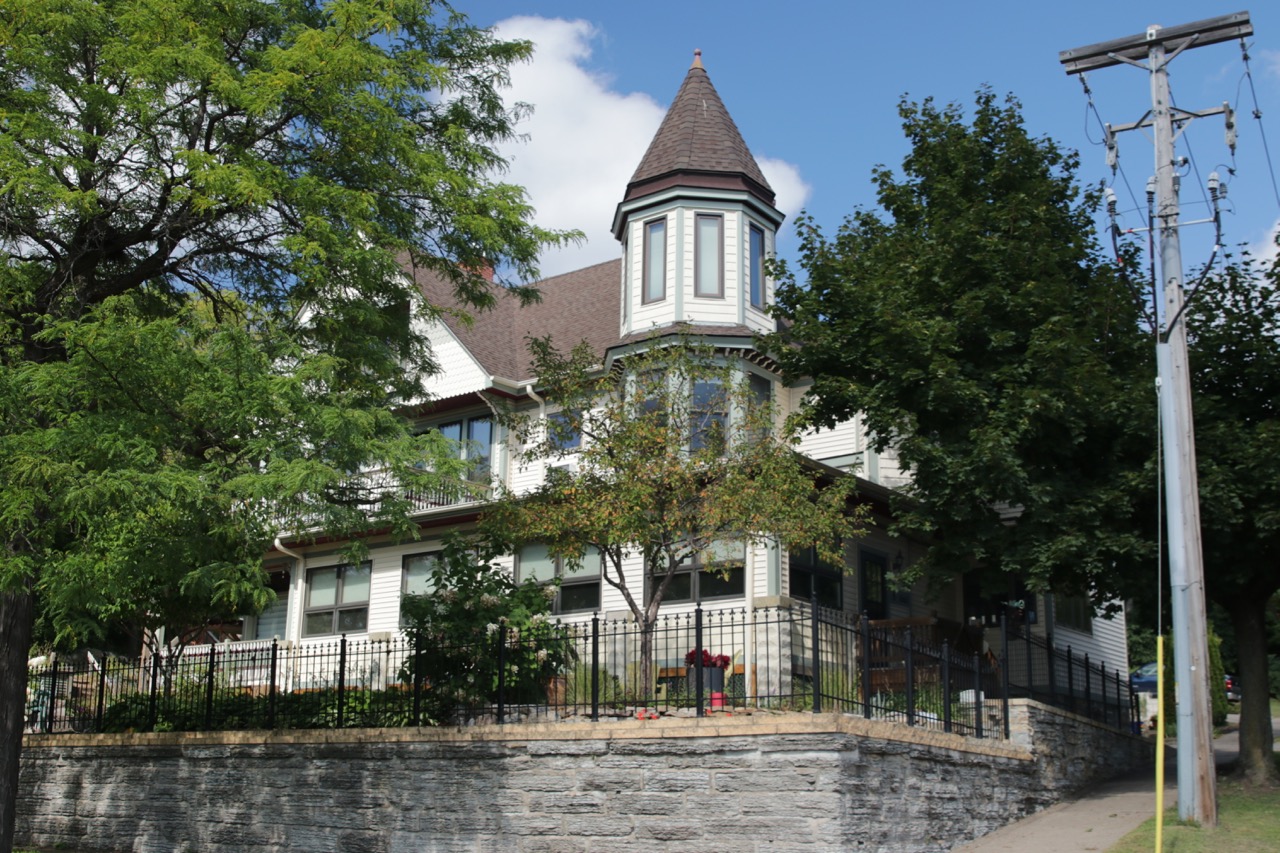


The two streets, Clermont Street and Bates Avenue, that run past the George Jameson House have interesting histories. Don Empson wrote in The Street Where You Live that Clermont is named after the first commercially successful steamboat, which was designed by Robert Fulton. Meanwhile, Bates (and nearby Maria Avenue) was named in 1857 for Maria Bates Dayton, the wife of Saint Paul real estate speculator Lyman Dayton.
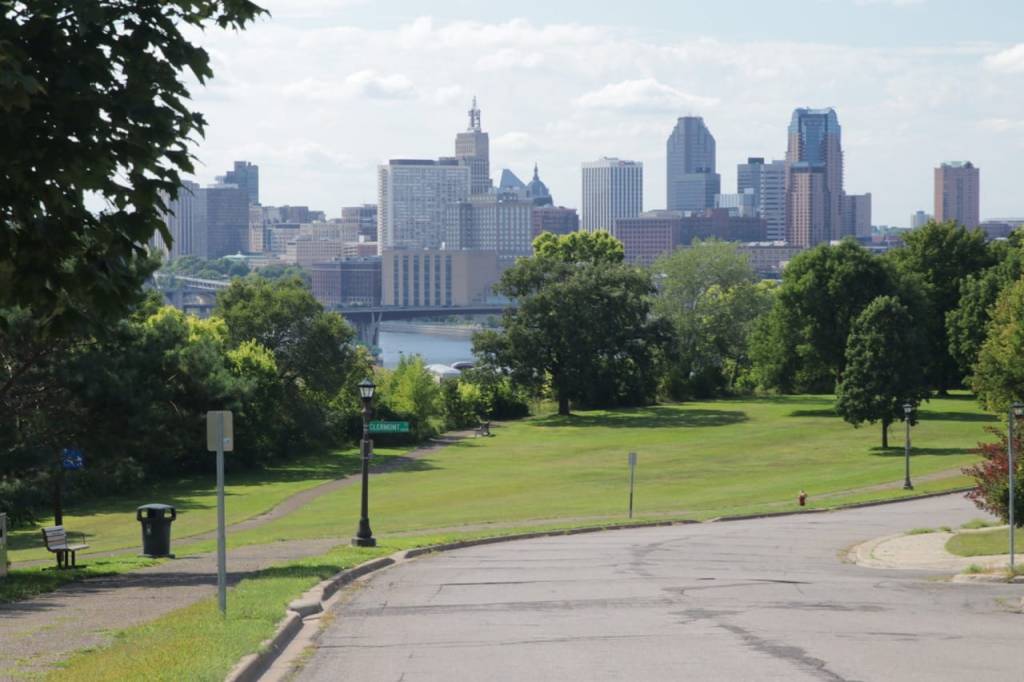
Saint Paul has some remarkable parks, but Indian Mounds Regional Park might be the best of them all. The most notable feature of the 111-acre bluff-top sanctuary is the six Indian mounds from which the park gets its name.


The park features the best views anywhere of Downtown Saint Paul and the Mississippi River. Established in 1893, Indian Mounds Park hugs the bluff overlooking Warner Road, the Mississippi River and the Saint Paul Downtown Airport.


The remarkable location of Indian Mounds Regional Park has been touted to residents and tourists for decades.

The 1915 edition of “The City of St. Paul and Vicinity – A Compendium of Information for Visitors and Citizens” described the park this way:
“Indian Mounds commands farreaching prospects of the hill-bound valleys of the Mississippi and Minnesota rivers, which are hardly equaled in America in their extent and magnificence. It is, without doubt, ‘The Prospect Park of the Northwest.”
Indian Mounds Park is packed with historical, cultural, artistic and scientific curiosities. According to Saint Paul Historical, artifacts, including pottery, carved pipes, stone knives, copper axes and ornaments, were found here that indicate indigenous people inhabited this area, perhaps as far back as 10,000 years ago. Archeologists and anthropologists believe the six burial mounds remaining atop the bluff in the park (and up to 29 others that were destroyed by early farms, houses and park construction) were built by the Hopewell Indians some 2,000 years ago.

At least one study speculates that Woodland and Oneota cultures used the same burial mounds after the Hopewell Indians. More recently, the Dakota buried their dead in the area, either using the previously built mounds or constructing their own. The Dakota People occupied this land when Europeans made their initial entrée in the 1600s.
For nearly 100 years after Indian Mounds Park was established, the remaining mounds were not treated with the reverence or deference they deserved. Yes, etiquette in European American cemeteries was also different in the late 1800s. For example, picnics among graves on family plots were a common experience in many parts of the country. However, desecration and robbing of Native American graves continued for the better part of the 20th Century.

At Indian Mounds Park, roads were built around the remaining mounds, and paths over some mounds were made to give visitors better views of the curiosities and the surrounding landscape. Even electric utility poles were placed into some of the mounds.

The City of Saint Paul undertook a major renovation of Indian Mounds Park in the early 1980s, first removing the roads that ran between the mounds and bluffs, and soon after, with the leadership of the Dayton’s Bluff Community Council, installed fencing around the six mounds.

More changes are coming to Indian Mounds Regional Park to further protect the sacred Indian burial grounds and improve the park’s infrastructure. The most controversial part of the upgrade is removing the walking trails along the bluff. Several organizations of Native Americans came out strongly in support of the plan which would increase the buffer around the burial mounds and other sacred spots within the park. Some neighbors, meanwhile, object to the loss of park space and vistas. Signs alerting visitors to the proposed changes were posted conspicuously around the park. Click here for details of the proposed Indian Mounds Park changes.
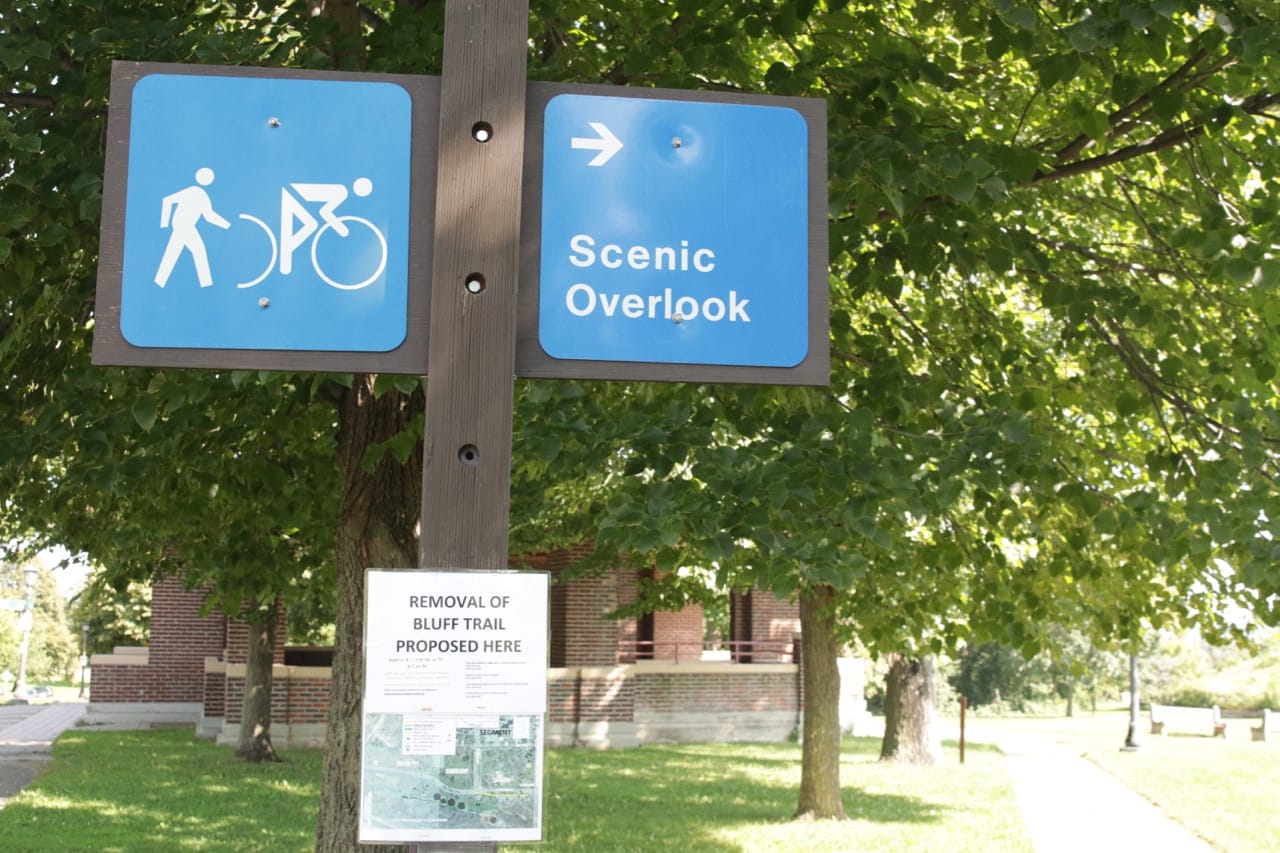
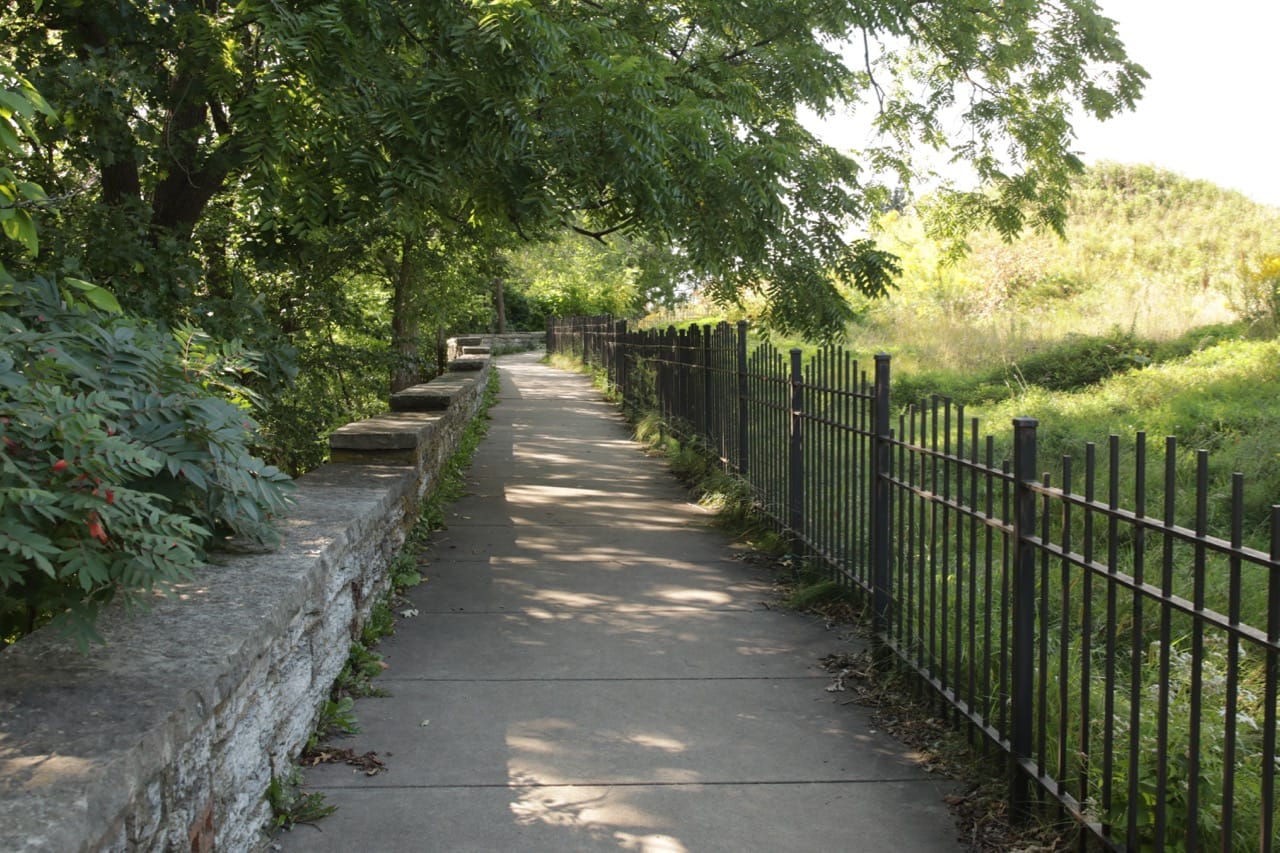
There are many other things to see and do in Indian Mounds Regional Park, such as a look back at a slice of local aviation history.




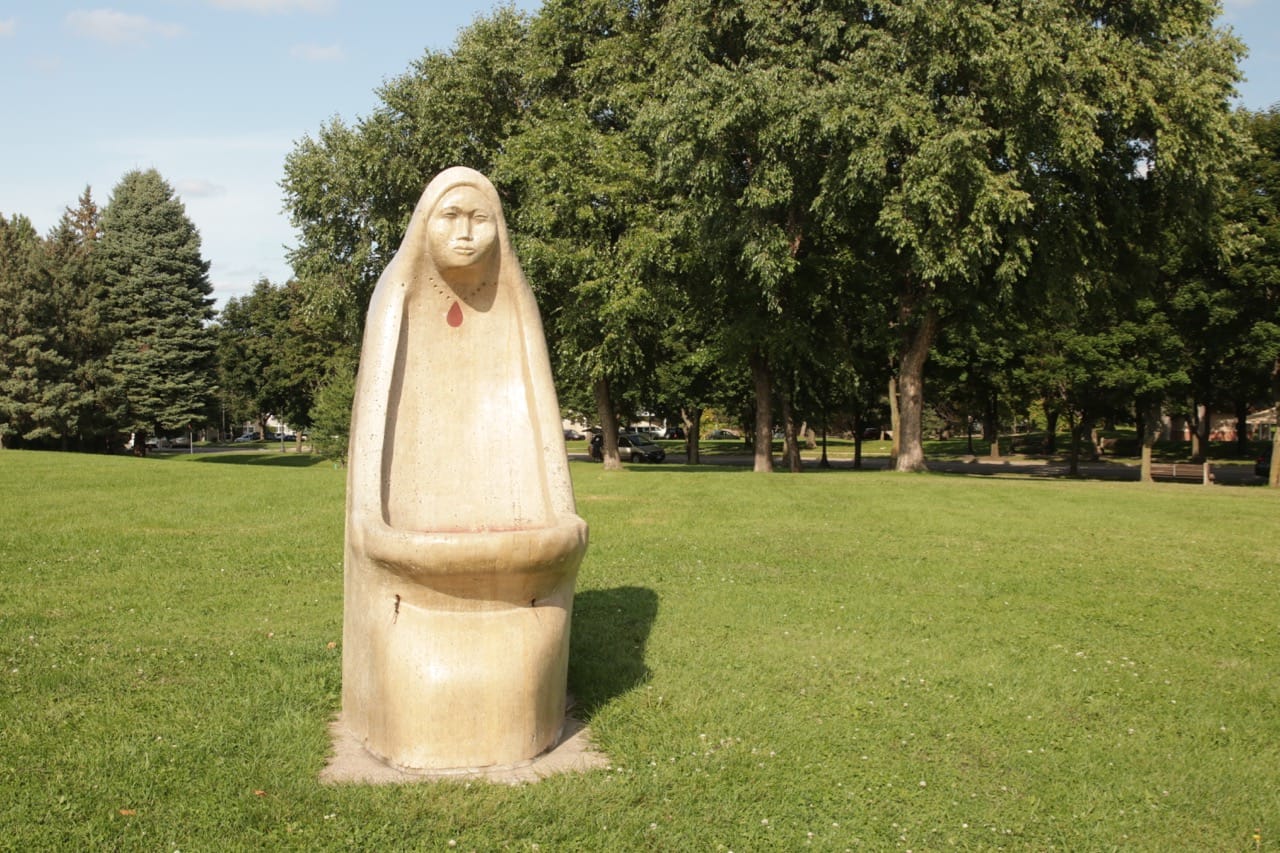

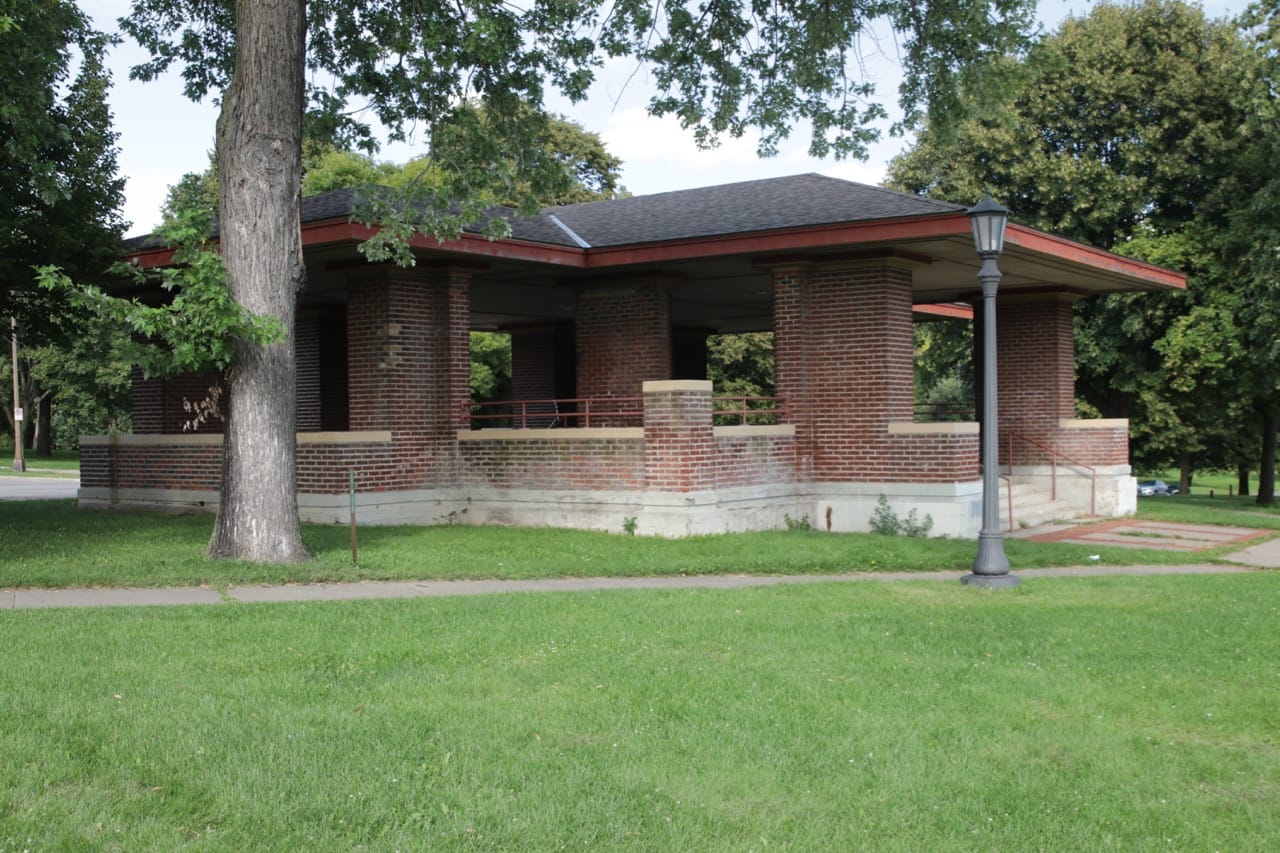


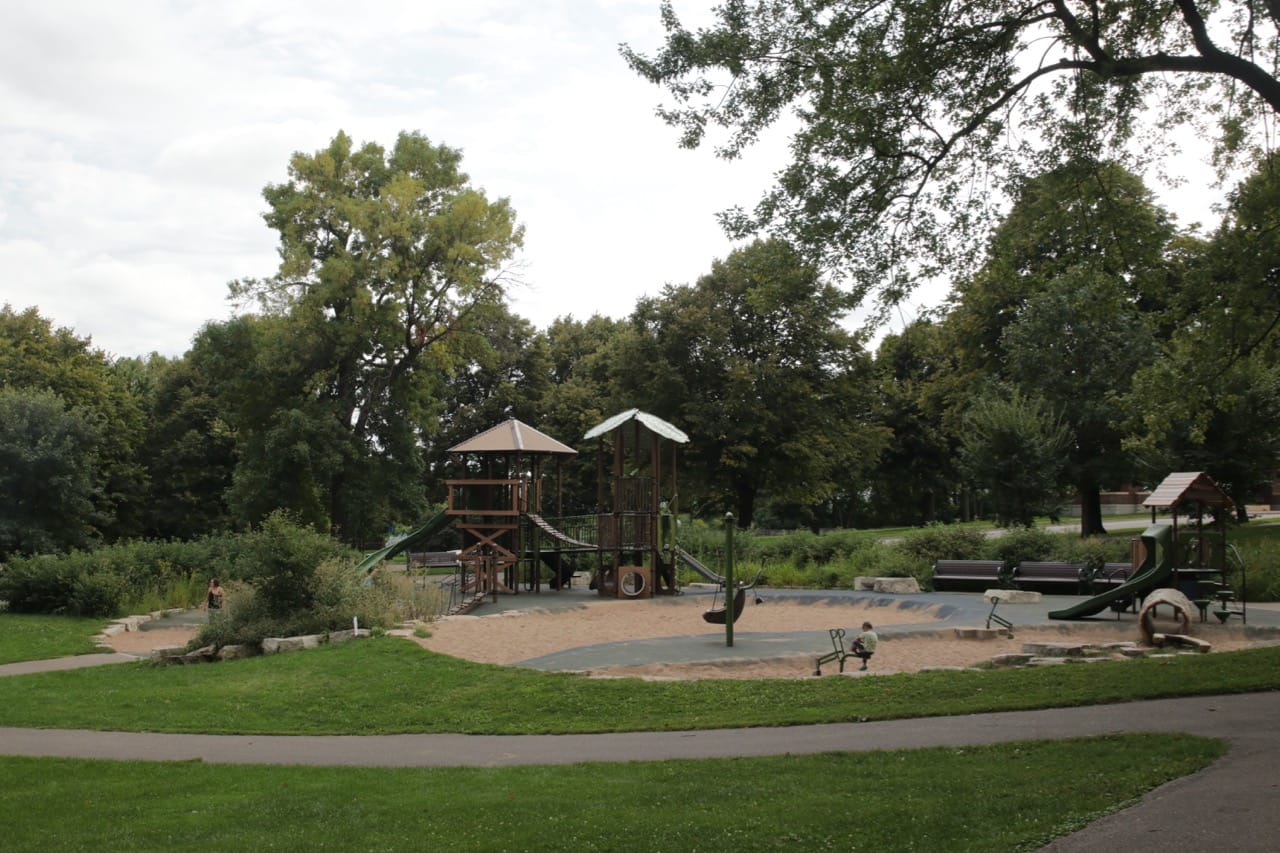

Toward the west end of the park is the Carver’s Cave Overlook. The cave is known as Wakan Tipi to native Dakota peoples, who consider it sacred.





Thorn Street is the northern border of the eastern part of the park. You’ll see wonderfully well kept homes on the 1000 block of Thorn.
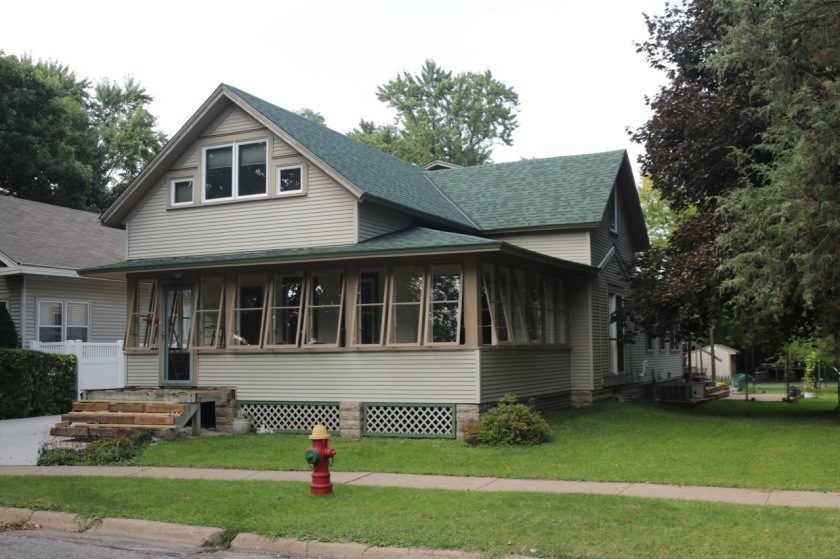

The last image for this ride is the signage at the west entrance of Indian Mounds Park. Some are places I’ll visit on future rides.

Here is the route of this 20-plus mile ride.
